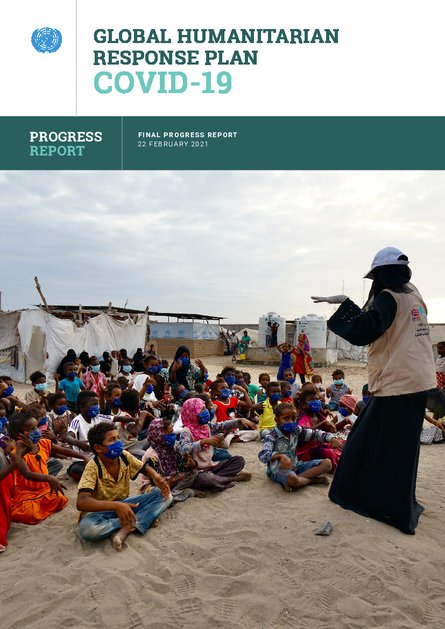
2020 was a year like no other. Amidst on-going humanitarian crises, largely fuelled by conflict and violence but also driven by the effects of climate change – such as the largest locust infestation in a generation – the world had to contend with a global pandemic. In less than one year (March-December 2020), more than 82 million COVID-19 cases and 1.8 million deaths were recorded. In that timeframe, out of the global COVID-19 totals, 30 per cent of COVID-19 cases and 39 per cent deaths were recorded in GHRP countries. Beyond the immediate health impacts of COVID-19, the secondary effects of the pandemic were particularly grievous in humanitarian settings, and they were, unfortunately, made worse by the same travel and movement restrictions aimed at containing the pandemic. Disruptions to supply chains, movement restrictions through border closures and lockdowns, and market volatility drastically increased food insecurity, pushing over 270 million people worldwide to suffer from acute food insecurity by the end of 2020. Gender-based violence sharply increased, fuelled by the loss of referral pathways, access to information, the closures of schools and safe spaces, and the day-to-day isolation of women and girls during lockdowns. Some countries recorded a 700 per cent increase in calls to gender-based violence (GBV) hotlines in the first months of the pandemic. The pandemic also increased the abuse and neglect of older persons who are the group most at-risk of dying from COVID-19.